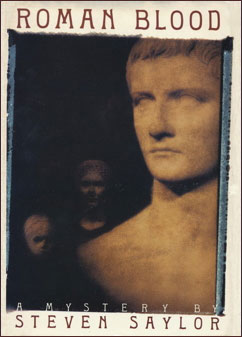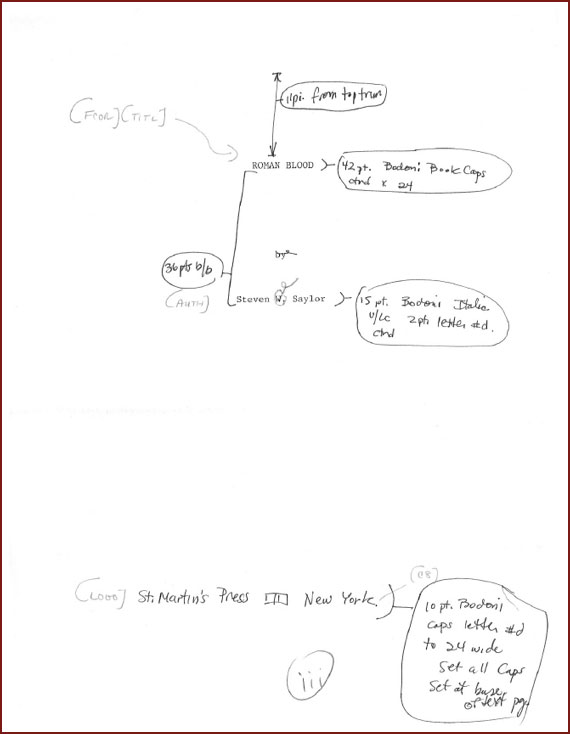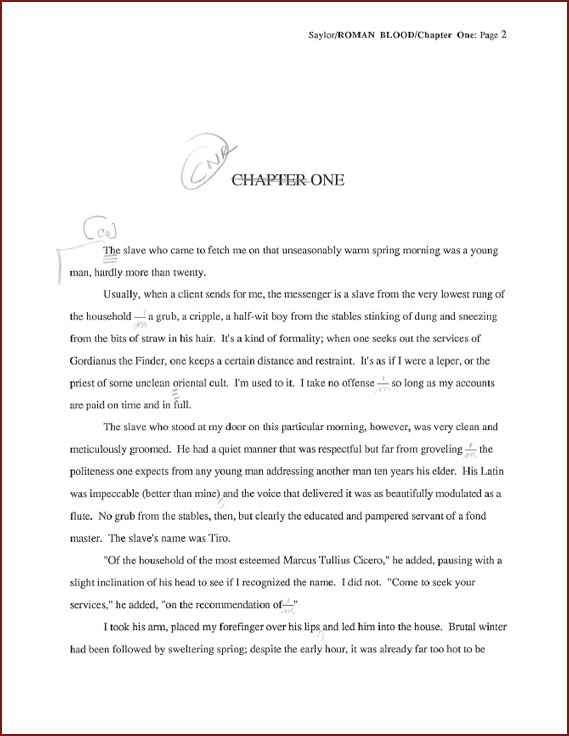 |
|
How did Roman Blood come to be written and published? Steven tells the story this way: Like many aspiring authors, I tried for many years (beginning in my teens and all through my twenties) to conceive and finish a first novel. I wrote in the genres I was reading—first science fiction and fantasy, then historical fiction. (For a long time I was determined to write a novel set in the Byzantine Empire.) Then—thanks largely to the Jeremy Brett TV series of Sherlock Holmes, which led me to read the entire canon by Arthur Conan Doyle—I became drawn to mystery fiction. At the same time, I finally traveled to Rome. Returning to San Francisco, I found myself craving a book that would combine my love of mystery fiction with my love of ancient Rome, but at that time, no such novel seemed to exist. Coming across a copy of the Penguin paperback of Cicero’s Murder Trials (translated by the great Michael Grant), I thought: maybe this will satisfy my craving—true crime set in ancient Rome. Reading the first oration, the young Cicero’s defense of Sextus Roscius, a man accused of murdering his father, I thought: what a fantastic novel this story would make. And so I set about writing the very book I most wanted to read—a murder mystery set in ancient Rome. At first, I intended to make Cicero a sort of Sherlock Holmes, and his secretary and slave Tiro his Watson; but after 68 pages in that vein [read a sample of the abandoned first attempt here], I realized I wanted more distance from Cicero, and decided to invent my own sleuth, a worldly-wise young Roman skilled at digging up dirt. And so, Gordianus the Finder was born. Two years later, the novel was finished. A friend and colleague, the late John Preston, was in San Francisco for a writing conference; so was the legendary editor, Michael Denneny. Preston generously promised to deliver my manuscript personally to Denneny—who was stuck lugging a very heavy manuscript by someone he’d never heard of back to New York! After six long months, and several postcard inquiries from the anxious young author, Denneny sent me a letter accepting the novel, and a one-book contract followed. With the book selling out its small print runs and being acquired by Ivy Books for a paperback edition, Roman Blood did just well enough to merit a sequel (something I hadn’t even considered until Michael Denneny suggested it)...and so the Roma Sub Rosa series was off and running. Two personal notes (spoiler follows!): At the end of the first draft of the novel, Gordianus sees the street urchin Eco, but passes on, ending the novel on a melancholy note. My first two readers, Penni Kimmel and Rick Solomon, both expressed disappointment, saying they thought Gordianus would surely take the abandoned boy home with him. I realized that this was what I wanted to happen, as well, but instead I had given in to some hankering for gravitas that demanded a more downbeat ending. As a writer, I learned a big lesson: listen to your readers! The ending was promptly changed (with a veiled thank you to Penni in the Author’s Note), as was the future course of the series: young Meto would play an instrumental role in many of the subsequent stories, and Gordianus was set to acquire and nurture more members of his unconventional family. I dedicated the book to Rick Solomon, who was then my partner of 15 years (and is now, after 40 years together, my legally wedded husband). The dedication is the Latin phrase auspicium melioris aevi, which invokes “an omen of a better time to come.” The publication of Roman Blood, for me, was certainly that. The book changed my life, and I am thankful to everyone, everywhere in the world, who has taken the time to read it.
|
 |
 |
|
(Return to the Roman Blood 25th Anniversary Main Page.) |